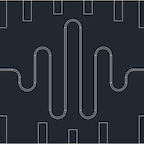
Life after charge noise: recent results with transmon qubits
Type
We review the main theoretical and experimental results for the transmon, a superconducting charge qubit derived from the Cooper pair box. The increased ratio of the Josephson to charging energy results in an exponential suppression of the transmon's sensitivity to 1/f charge noise. This has been observed experimentally and yields homogeneous broadening, negligible pure dephasing, and long coherence times of up to 3 $μ$s. Anharmonicity of the energy spectrum is required for qubit operation, and has been proven to be sufficient in transmon devices. Transmons have been implemented in a wide array of experiments, demonstrating consistent and reproducible results in very good agreement with theory.
We review the main theoretical and experimental results for the transmon, a superconducting charge qubit derived from the Cooper pair box. The increased ratio of the Josephson to charging energy results in an exponential suppression of the transmon’s sensitivity to 1/f charge noise. This has been observed experimentally and yields homogeneous broadening, negligible pure dephasing, and long coherence times of up to 3 μs. Anharmonicity of the energy spectrum is required for qubit operation, and has been proven to be sufficient in transmon devices. Transmons have been implemented in a wide array of experiments, demonstrating consistent and reproducible results in very good agreement with theory.

